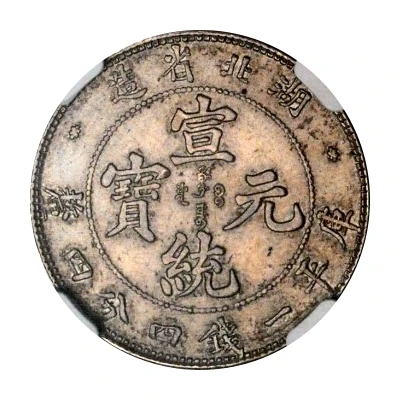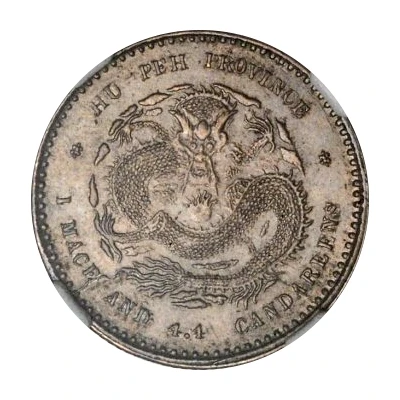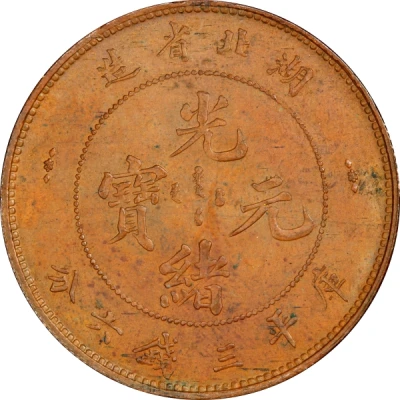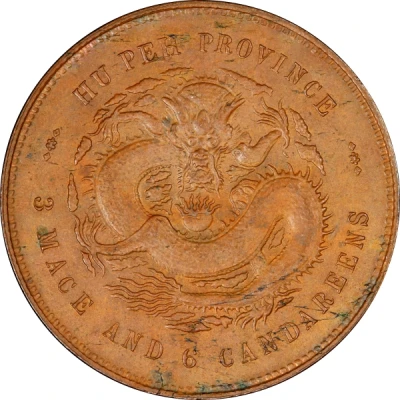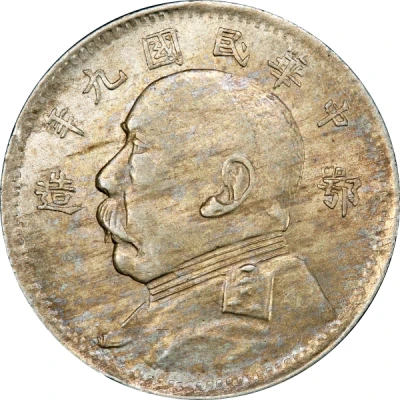
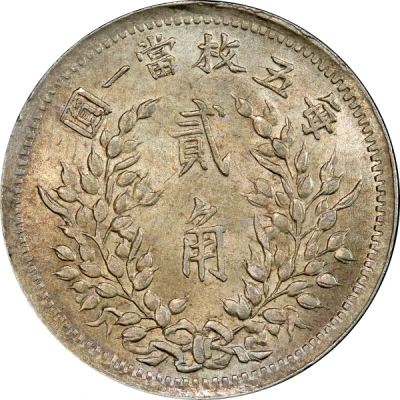

© PCGS
2 Jiao "Fat Man dollar" type; Zao Hu
9 (1920) year| Silver | 5.40 g | 23 mm |
| Issuer | Hupeh Province (Chinese provinces) |
|---|---|
| Period | Province of the Republic of China (1912-1949) |
| Type | Standard circulation coin |
| Year | 9 (1920) |
| Calendar | Chinese republican |
| Value | 2 Jiao (0.2) |
| Currency | Yuan (1895-1949) |
| Composition | Silver |
| Weight | 5.40 g |
| Diameter | 23 mm |
| Shape | Round |
| Technique | Milled |
| Orientation | Medal alignment ↑↑ |
| Demonetized | Yes |
| Updated | 2024-10-04 |
| Numista | N#276566 |
|---|---|
| Rarity index | 94% |
Reverse
Two Chinese ideograms within wreath with more above.
Script: Chinese
Lettering:
圓一當枚五每
貳
角
Translation:
5 pieces in 1 Yuan
2 Jiao
Engraver: Luigi Giorgi
Edge
Reeded.
Interesting fact
The 2 Jiao coin from Hupeh Province, also known as the "Fat Man dollar," was designed by a French sculptor named Paul-Émile Becquet. He was a renowned artist who also designed coins for other countries, including France, Belgium, and Japan. The coin's design features a portrait of a smiling Buddha on one side and a Chinese dragon on the other, which was a common motif in Chinese currency at the time. The coin was minted in 1920 and was made of silver, weighing 5.40 grams. It's an interesting piece of history that showcases the cultural and artistic exchange between China and other countries during that time period.
